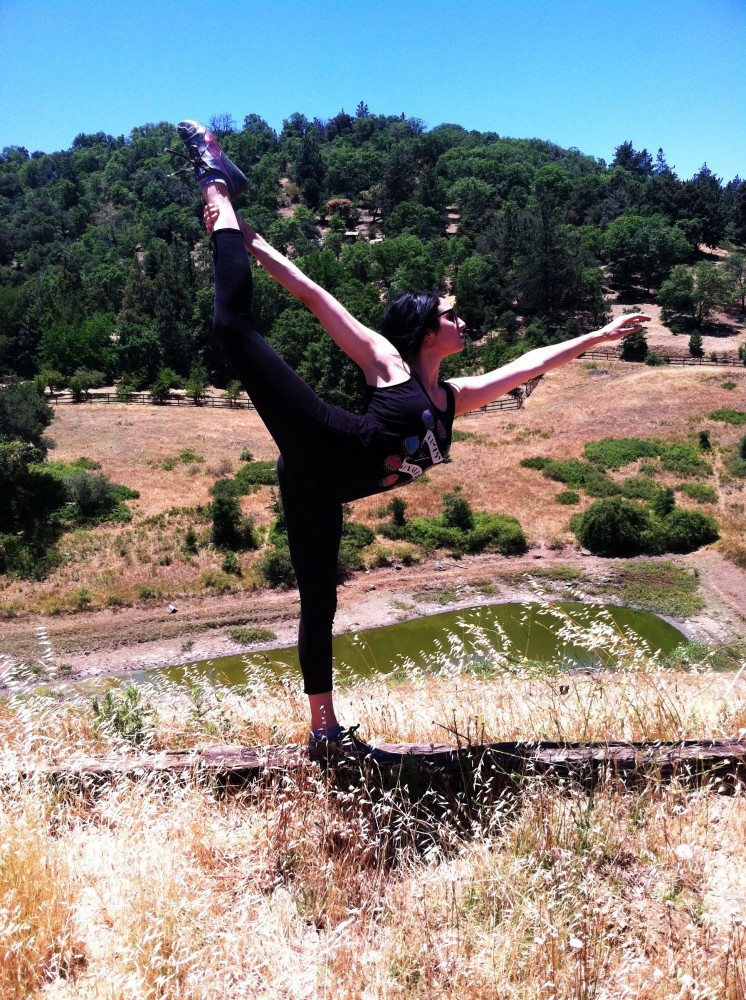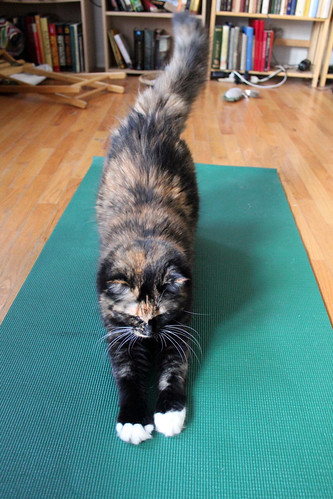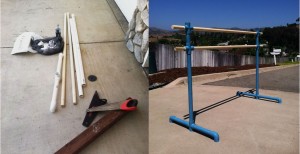Oh boy! I just finished my first class in a few weeks and I am hurtin’! It was a really strange circumstance of me leaving my studio just in time for the new studio to be closed for two weeks, then I was out of town. So It had been three weeks of no structured class. I have been stretching and trying to practice at home as much as possible but I think that there is definitely something to be said for the rigor of a structured class. I got to class a bit early to stretch and speak with the instructor and thought I was ready for anything- I couldn’t have been more wrong! Haha. It still surprises me, adjusting to my body as an adult and how it works, to see how just a little break in activity can send me right back to square one (okay maybe like square five, but still not where I was at!). I got home a sweaty mess, plopped down on the bed, and told my fiancé that I know I need to eat but I’m not sure how to go about it because 1. I can’t move my legs and 2. I’m nervous that the second I put food into my mouth I might throw up. Ok, I’m slightly dramatic but I really was whooped! I knew that I instantly needed to get on top of making sure my muscles don’t tighten up much because I knew if I didn’t I probably would be in a world of hurt tomorrow. I thought I’d share a few of my tips for avoiding that next day of crying when you drop your keys because you know how much it will hurt to pick them back up. 😉
1. Stretch it out: I like to lay on my back on the floor, stick my leg straight up at a 90 degree angle and just make slow circles of varying sizes with it. The slow motion really makes you stretch it out. Then I bring my leg straight over across my body for a while, bend it for a while, then I bring my knee to my chest. I also like to borrow some yoga moves like these here. I particularly love doing the cat, cow, child, and half downward dog because they feel so relaxing but they also really do stretch those muscles out. The key is to keep stretching throughout the day so that the lactic acid doesn’t settle in your muscles which is what makes you sore. It seems like the most obvious tip but I also think that it’s the first we forget.
2. Soak! I love a good, warm Lush Bath Bomb (or essential oil) and epsom salt bath. I find the that the combination of heat and scent take the epsom salt to the next level because you’re not just relaxing your muscles but your mind too. Personally, I get super stressed from being so busy and having a stressed mind leads to a tense body and there’s no amount of salt that can take that away. So lock the bathroom door, tell the kids or partner that you’re out of commission for 20 minutes and relax! I also enjoy partaking in a good foot soak, perfect for a dancer. I love trying new “recipes” that I find on pinterest. Today I tried one with green tea, baking soda, vinegar and epsom salt. The result wasn’t too pretty… the water, well it looked a little gross. However, my feet felt AMAZING after.
3. Enlist a loved one for a massage! This is self-explanatory and can be fun!
4. Fuel your body properly. This one is hard. There are so many different resources with conflicting ideas about what to eat in general, but when you add in what to eat for working out there are one thousand more ideas. What I have found that has really worked for my body is to have a protein AND carb heavy snack about an hour before I go to ballet. Something like bagel with peanut butter or hummus. Occasionally I throw an apple in as well. I also make sure to follow my class up with a balanced yet protein and fresh food heavy meal or snack. For example, today I had a burrito in a whole wheat tortilla with eggs inside, lots of lettuce, carrots, avocado, and cabbage. I feel that I almost always feel so much better when I have something that is substantial but not heavy. I’ve read in a few places that blueberries (or any antioxidant heavy food) work well because they soak up all the free radicals left. Anti-inflammatory foods like kelp, salmon, ginger, green tea, and sweet potatoes are also supposed to be really helpful in telling your muscles to calm the heck down. And, of course, stay hydrated!
5. Try some topical treatments like white flower oil, icy hot, peppermint oil, or salonpas. My personal favorite when it comes to this is to, right after my hot bath, rub a little white flower oil diluted in baby oil all over my legs, bottom, back, arms, and shoulders and then bundle up in warm clothes for a while. This really lets it soak into my muscles and feels SO nice.
6. Finally, don’t be too afraid of the occasional ibuprofen or Tylenol. Sometimes the pain is just too much to manage with home remedies and that’s totally fine. You don’t have to do without!
Hopefully some of these tips are helpful/new to at least one person. What do you do to keep the aches and pains away?
-Caysie








